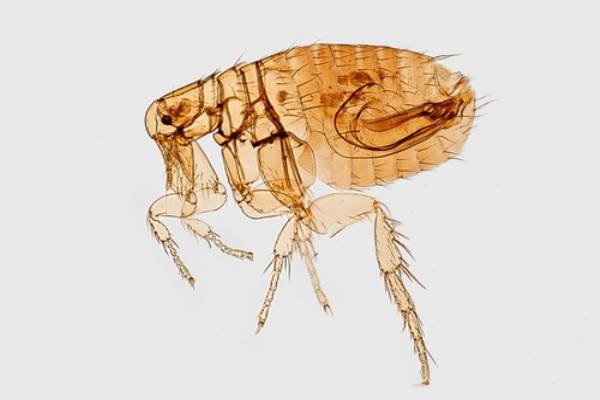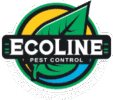How Fleas Enter Homes and Effective Prevention Techniques

Fleas are small, resilient pests that can quickly become a major problem inside homes. Their bites cause irritation to both people and pets, and their rapid reproductive cycle makes them difficult to eliminate once an infestation takes hold. Because they thrive in warm, humid environments, fleas are a year-round threat in many areas, making prevention and professional intervention critical.

Common Ways Fleas Enter Homes
Fleas are adept at finding their way indoors, and their size makes them nearly invisible during early stages of infestation. Understanding their entry methods helps homeowners take preventive action.
Typical entry points include:
- Pets as carriers: Dogs and cats are the most common hosts, picking up fleas while outdoors and bringing them inside.
- Wildlife intrusion: Rodents or other small animals nesting near homes can introduce fleas into yards and crawl spaces.
- Infested belongings: Fleas or their eggs may hitchhike on used furniture, rugs, or bedding.
- Human transport: Fleas can attach to clothing or shoes after spending time in infested areas.
- Outdoor environments: Tall grass, shaded areas, or debris piles provide ideal habitats where fleas wait for passing hosts.
Even households without pets are not immune, since wildlife or contaminated belongings can create unexpected infestations. Identifying how fleas gain entry is the first step in effective prevention.
Why Flea Infestations Escalate Quickly
One of the reasons fleas are so challenging to control is their remarkable reproductive capacity. A single female flea can lay dozens of eggs each day, which fall into carpets, upholstery, and cracks in flooring. Within weeks, eggs develop into larvae, pupae, and eventually biting adults.
Key factors contributing to rapid infestations include:
- Short life cycles: Fleas progress quickly from eggs to adults under favorable conditions.
- Hidden development: Eggs and larvae are often overlooked because they embed in fabrics or deep within flooring.
- Persistent pupae: Fleas in the pupal stage can remain dormant for weeks, re-emerging after treatments.
- Host dependency: Once attached, fleas remain close to pets or humans, feeding regularly and continuing reproduction.
- Environmental resilience: They survive well in warm, humid areas, making certain climates especially vulnerable.
Because infestations can surge within a short time, prompt professional involvement is often necessary to stop cycles before they worsen.
Effective Prevention Techniques for Fleas
Prevention strategies must address both the home environment and potential carriers. Homeowners who stay proactive reduce the likelihood of infestations developing.
Best practices for prevention include:
- Pet care routines: Regular grooming and veterinary-approved flea prevention products reduce the risk of pets introducing fleas.
- Indoor cleanliness: Vacuum carpets, upholstery, and pet bedding frequently to remove eggs and larvae.
- Outdoor maintenance: Keep grass trimmed and remove yard debris that could harbor wildlife carrying fleas.
- Barrier protection: Seal gaps and entry points that allow rodents or stray animals near living spaces.
- Furniture caution: Avoid bringing in used rugs or upholstered items without carefully checking for pests.
For families concerned about safety, adopting eco-friendly pest control methods ensures prevention strategies that protect health while reducing chemical exposure.
Risks of DIY Flea Treatments
Many homeowners turn to store-bought sprays or powders to tackle fleas, but these solutions often fall short. Fleas hide deep in fabrics and develop in stages that are not easily reached by surface-level products. DIY efforts may temporarily reduce adult populations but rarely address eggs and larvae.
Why DIY often fails:
- Incomplete coverage: Treatments miss areas like cracks, baseboards, and hidden pet bedding.
- Resistance issues: Fleas can develop tolerance to overused chemicals, reducing effectiveness.
- Health concerns: Misapplied products may pose risks to children and pets.
- Hidden infestations: Without proper inspection, colonies continue growing in overlooked spaces.
- Short-term relief: Fleas reappear quickly when treatments fail to break the life cycle.
The dangers of DIY pest control highlight why professional intervention is a safer and more reliable option. Skilled technicians have access to advanced solutions that target all life stages, preventing re-infestations.
The Role of Professionals in Flea Prevention
Because fleas reproduce rapidly and hide in difficult-to-reach areas, professional oversight is often the most reliable way to achieve long-term relief. Experts understand how to target each stage of the flea life cycle and design treatment plans specific to each household.
Benefits of professional support include:
- Thorough inspections: Identifying hotspots indoors and outdoors ensures no areas are overlooked.
- Targeted treatments: Professionals use specialized methods that reach eggs, larvae, and adults.
- Integrated strategies: Approaches combine pet care, environmental adjustments, and treatment applications.
- Safe practices: Materials are applied responsibly, protecting both families and pets.
- Ongoing monitoring: Regular visits ensure prevention efforts remain effective through changing seasons.
Fleas may seem like a small issue at first, but without professional management, infestations often escalate and become far more disruptive.
Reclaim Comfort from Flea Worries
Fleas can turn a peaceful home into a source of frustration and discomfort, but they do not have to. By combining preventive habits with expert care, you can eliminate infestations and stop them from coming back. For reliable, long-term protection, contact EcoLine Pest Control and take the first step toward a flea-free home today.


